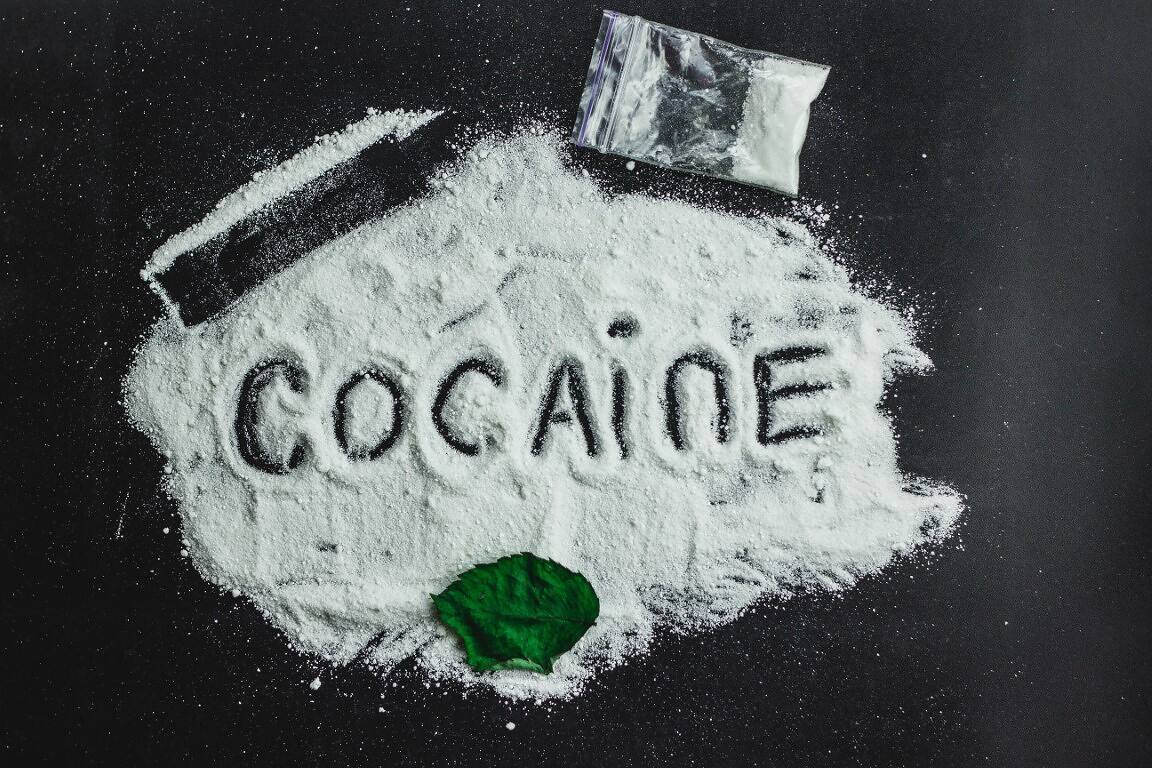Cocaine, a powerful stimulant drug derived from the leaves of the Coca plant species (Erythroxylum coca and E. novogranatense), has played a significant role in human history, from traditional uses in South American indigenous cultures to its modern status as a strictly regulated substance. This article provides an in-depth examination of cocaine, its effects on the human body, associated risks, and its impact on society. The US Drug Enforcement Administration plays a central role in regulating cocaine and providing public education on its risks.

What is Cocaine?
Cocaine is a highly addictive stimulant drug that profoundly affects the brain and nervous system. Derived from the leaves of the coca plant, native to South America, it has a long history of both traditional and recreational use. A Class A drug in the UK and classified as a Schedule II substance in the United States, cocaine has a high potential for abuse and limited medical applications.
It is commonly found in several forms, including powder, crack, and freebase. The most prevalent form is powder, produced by chemically processing coca leaves. Crack cocaine, a solid form, is made by cooking powder cocaine with baking soda, resulting in a substance that is typically smoked. Freebase, another form, is created by adding ammonia to cocaine powder, making it suitable for smoking as well.
Chemical Properties and Forms
Cocaine, with the molecular formula C17H21NO4 is classified as a tropane alkaloid. This complex organic compound is structurally related to other alkaloids such as atropine and hyoscine.
Cocaine exists in two primary forms:
- Cocaine hydrochloride: A water-soluble white powder that is typically snorted or dissolved for injection.
- Freebase cocaine (crack): A crystalline form that is usually smoked, producing a characteristic crackling sound when heated.
The form significantly influences its method of administration, onset of effects, and associated risks.
History and Prevalence of Cocaine Use
Cocaine has been utilised for centuries in South American traditional medicine and rituals. Its recreational use surged in the United States during the late 19th and early 20th centuries. According to the Substance Abuse and Mental Health Services Administration (SAMHSA), approximately 1.3 million people in the United States used cocaine in 2020. This widespread use underscores the significant public health concern posed by addiction.
Mechanism of Action
Cocaine’s potent effects stem from its unique interaction with the central nervous system. It primarily functions by inhibiting the reuptake of key neurotransmitters:
- Dopamine
- Norepinephrine
- Serotonin
This inhibition results in elevated levels of these neurotransmitters in the synaptic cleft, leading to increased stimulation of their respective receptors. The flood of dopamine, in particular, is responsible for the intense euphoria and energy boost associated with cocaine.
Methods of Use and Their Effects
The effects can vary significantly based on the method of use. Cocaine can be administered through various methods, each with distinct onset times, durations, and risk profiles:
Snorting (Insufflation)
- Onset: Effects typically felt within 3-5 minutes
- Duration: 15-90 minutes
- Risks: Damage to nasal tissues, loss of sense of smell, difficulty swallowing
Injection
- Onset: Rapid effects within 30-45 seconds
- Duration: 20-60 minutes
- Risks: Increased risk of overdose, transmission of blood-borne diseases (HIV, Hepatitis C), vein damage
Smoking (Inhalation) of Crack Cocaine
- Onset: Nearly instantaneous effects (3-5 seconds)
- Duration: Intense but short-lived high (5-15 minutes)
- Risks: Respiratory damage, “crack lung,” increased addictive potential due to rapid onset
Crack Cocaine: A More Addictive Form

Crack cocaine is a particularly potent and addictive form. Created by cooking the powder with baking soda, crack forms solid crystals that are typically smoked. This method of use leads to a faster and more intense high compared to snorting or injecting. However, the rapid onset of effects also makes crack cocaine more addictive and dangerous. Users of crack cocaine are at a higher risk of severe physical and mental health problems, including respiratory issues, heightened addictive potential, and increased likelihood of engaging in risky behaviours.
Immediate and Long-Term Effects
Immediate Effects
Cocaine produces a range of immediate effects, both mental and physical:
Mental effects:
- Intense euphoria
- Heightened alertness and energy
- Increased confidence and sociability
- Enhanced sensory perception
- Potential for anxiety, paranoia, or aggression
Physical effects:
- Elevated heart rate and blood pressure
- Dilated pupils
- Increased body temperature
- Constricted blood vessels
- Reduced appetite
- Increased sexual arousal
Side effects:
- Tremors or muscle twitches
- Vertigo
- Restlessness and insomnia
- Potential for seizures or stroke in susceptible individuals
Long-Term Effects

Prolonged cocaine use can lead to significant health issues and behavioural changes:
- Tolerance: Users may require increasingly larger doses to achieve the desired effects.
- Sensitisation: Paradoxically, some users may become more sensitive to cocaine’s toxic effects over time.
- Cognitive impairment: Memory problems, attention deficits, and impaired decision-making abilities.
- Mood disorders: Increased risk of depression, anxiety, and psychosis.
- Cardiovascular damage: Weakened heart muscle, increased risk of heart attack and stroke.
- Respiratory issues: Chronic cough, increased susceptibility to respiratory infections.
- Gastrointestinal problems: Abdominal pain, nausea, and malnourishment due to appetite suppression.
Health Risks and Complications of Cocaine Overdose
Cocaine use is associated with numerous serious health risks:
- Cardiovascular complications: Heart attacks, arrhythmias, and aortic dissection.
- Neurological issues: Seizures, strokes, and movement disorders.
- Respiratory damage: Particularly severe when smoking crack cocaine, leading to conditions like “crack lung.”
- Infectious diseases: Increased risk of HIV, hepatitis, and other infections, especially among intravenous users.
- Mental health disorders: Exacerbation of existing mental health conditions or onset of new disorders.
- Reproductive health: Potential for pregnancy complications from prenatal cocaine exposure and adverse effects on fetal development such as low birth weight.
Overdose risk: Cocaine overdose can be life-threatening, with symptoms including:
- Severe anxiety or agitation
- Hyperthermia (dangerously high body temperature)
- Seizures
- Irregular heartbeat
- Respiratory failure
- Stroke or heart attack
The risk of overdose is significantly increased when cocaine is combined with other substances, particularly alcohol, which leads to the formation of Cocaethylene, a compound with enhanced toxicity. Additionally, mixing cocaine with other drugs can lead to unpredictable effects and increased health dangers.
Cocaine Users: Demographics and Risk Factors
Cocaine users come from diverse backgrounds, but certain demographics are more prone to use. According to the National Institute on Drug Abuse (NIDA), young adults aged 18-25 are the most likely age group to use it. Additionally, men are statistically more likely to use cocaine than women. Individuals with a history of substance abuse or mental health disorders are also at a higher risk of developing a cocaine addiction. Understanding these risk factors is essential for effectively targeting prevention and treatment efforts.
Overdose and Emergency Response
A cocaine overdose is a medical emergency that can be life-threatening. Symptoms of an overdose include a rapid increase in heart rate and blood pressure, seizures, hallucinations, and difficulty breathing. If you or someone you know exhibits these symptoms, it is crucial to call your local emergency number immediately. Emergency treatment for a cocaine overdose typically involves administering medications to manage symptoms and stabilise vital signs. Prompt medical intervention can be the difference between life and death.
Cocaine Addiction and Withdrawal
Cocaine’s profound impact on the brain’s reward system contributes to its high addictive potential. The intense euphoria and energy boost can lead to a cycle of compulsive use despite negative consequences.
Addiction Characteristics
- Intense cravings for cocaine
- Loss of control over use
- Continued use despite awareness of harm
- Neglect of personal, professional, or social responsibilities
Withdrawal Symptoms
When a regular cocaine user abruptly stops or significantly reduces their use, they may experience a range of withdrawal symptoms:
- Severe depression
- Fatigue and increased sleep
- Increased appetite
- Irritability and restlessness
- Intense drug cravings
- Vivid and unpleasant dreams
The severity and duration of withdrawal can vary based on factors such as the length and intensity of cocaine use, overall health, and concurrent use of other substances.
Medical Applications
Despite its high potential for abuse, cocaine retains limited medical applications:
- Local anaesthesia: Used in certain surgical procedures involving the upper respiratory tract.
- Diagnostic tool: Occasionally used in neurological testing, such as for diagnosing Horner’s syndrome.
Medical formulations of cocaine, such as Goprelto and Numbrino, are strictly controlled and administered only by licensed healthcare professionals.
Global Use and Cultural Impact
Cocaine use is a global phenomenon with far-reaching societal impacts:
- Prevalence: In 2019, an estimated 20 million people worldwide used cocaine.
- Regional variations: Highest use rates are observed in North America, Western and Central Europe, and Oceania.
- Cultural significance: Cocaine has influenced popular culture, music, and literature, particularly during its surge in popularity in the 1970s and 1980s.
- Economic impact: The illicit cocaine trade has significant economic and geopolitical ramifications, particularly in producing and transit countries.
Legal Status and Regulation
Cocaine is classified as a Class A Drug by the UK Misuse of Drugs Act. It is classified as a Schedule II controlled substance in the United States, indicating:
- High potential for abuse
- Some accepted medical use with severe restrictions
- Strict regulation and control
Similar classifications exist in many countries worldwide, reflecting the global consensus on cocaine’s high-risk profile.
Treating Cocaine Addiction and Recovery
Recovery from cocaine addiction is challenging but achievable with appropriate support and treatment. Comprehensive treatment approaches may include:
- Behavioral therapies: Cognitive-Behavioural Therapy (CBT), Contingency Management, and Motivational Interviewing.
- Support groups: Narcotics Anonymous and other peer support programs.
- Pharmacological interventions: While there are no FDA-approved medications specifically for cocaine addiction, various medications may be used to manage withdrawal symptoms and co-occurring disorders.
- Holistic approaches: Incorporating nutrition, exercise, and stress management techniques.
Seeking Help
If you or someone you know is struggling with cocaine, it’s crucial to seek professional help. Addiction is a complex condition requiring comprehensive medical and psychological support. Remember that recovery is possible, and many individuals have successfully overcome cocaine addiction with proper treatment and support.
Don’t hesitate to seek help. Contact us, your healthcare provider, local addiction services, or a national helpline for guidance and support.
Conclusion
Cocaine’s potent effects and high addictive potential make it a substance of significant concern in public health and policy. Understanding its properties, effects, and risks is crucial for individuals, healthcare providers, and policymakers alike. While using cocaine carries severe risks, it’s important to approach the issue with compassion and evidence-based strategies, focusing on prevention, harm reduction, and effective cocaine detox and treatment options for those affected by addiction.



